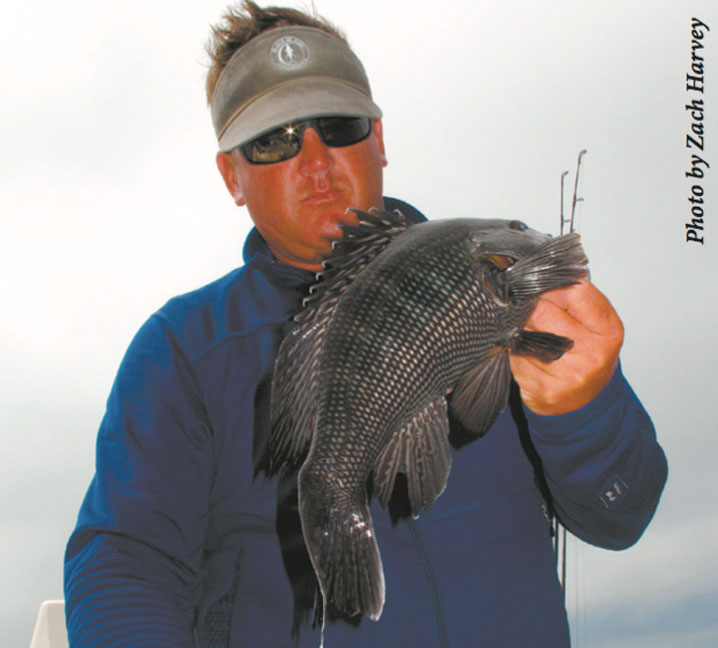June Fluking
I hate to see June go. Force of long-held fishing habits, the optimism of a fast-evolving new season, my own ambition still strong, and of course the sixth month’s well-documented fish production all over the Northeast—it’s an uncommonly good time to be alive. July changes the arrangement. Suddenly, school’s out, vacations begin, tourists arrive en masse, the fishing grounds are crawling with the fishing hopeful of every stripe. It’s hot. The electrical charge of migratory fishing bleeds out into the more systematic, labor-intensive, and exacting habits that high summer fishing success demands. Suddenly we’re working on resident fish that are more territorial, more predictable, and—alas–more affected by concentrated fishing pressure.
The nighttime bait fishing starts to wreak havoc on the daytime methods.
The full-timers, making piscatorial hay while the sun shines, get grouchy; the flow of information constricts as the local:tourist ratio goes totally out of whack. Before you know it, the surf guys start the two-month manic episode that is an unavoidable consequence of working among humans when the sun’s up, back on the prowl an hour or two after most real people have settled into REM sleep.
Like Korkered bridge trolls armed with Lami’s and reels with sealed drags and neck lights, the remaining shorebound stripermen haunt tidal inlets off in the margins of drunken tourists’ peripheral vision. The charter fleet books whatever trips it can cobble together given the mounting strain on their living. July marks the beginning of the weekend insanity—three trips a day Thursday, Friday, Saturday, and a 12-hour offshore run Sunday.
Contrary to decades of spring- and fall-run propaganda that has, for so many of us, wallpapered right over the piscatorial reality that we do much or most of our annual big-striper damage around the late-June, July, and August moons. The lights-out fishing less-seasoned bassmen hear so much about from captains, crews, and boat-owning brothers-in-law is June. But where the fish they imagine spill out both ends of the fish totes, the June blitzes are dominated by smaller stuff—10 pounds to the mid-20s, and the occasional 30 or 32. July, the pace of the pick drops off but suddenly there are numbers of high-30s and 40s and more 50s than you’d guess crossing
the docks.
For all that’s been said about June fluking, July’s fishery tends to offer a more robust array of choices—not just big-bait-big-fish-deep-water, but shallow-water live-baiting, good shoreside slabwork up inside the oceanfacing inlets; even the little guys with cartop skiffs find a share of relatively unmolested summer flatties along the harbor channel edges, the bays, etc. in southern New England, the bluefish tend to jump into the fray sometime after the second June moon, and many years, take over the world one piece of bottom at a time as month seven picks up momentum.
The black sea bass are thick—all sizes, sexes, life stages, types of food and types of seabed—and still coming, but some Big Green mischief during the 2007 Reauthorization of the Magnuson Act summoned a regulatory Golem whose primary achievement has been dragging the entire fishing community into a statutory death spiral: We catch lots of sea bass because they’re almost thick enough to become serious hazards to coastal navigation, the Carolinas to Cape Cod. Because we catch a lot, we exceed our annual allocation by a staggering margin.
Now, because legislators imposed “accountability measures” in Magnuson, recreational fishermen will face the unenviable task of taking the previous year’s overage off the top of this year’s target. It gets worse: The most destructive measures in terms of creating an economically sustainable fishery have been those that require NOAA policymakers, acting on the advice of their scientists, to calculate the degree of statistical uncertainty in the stock-assessment figures they use to plan, and subtract that percentage—the estimated doubt, expressed as percent-standard-error— right off the top of the catch target.
Bottom line: We start with a target reduced by the estimated overage racked up in the previous fishing year, then reduce that shrunken number by a very high rate of scientific/statistical uncertainty. When the season begins, we learn that there are way more sea biscuits around than there were the year before. We catch more sea bass, blow our already-greatly reduced target out of the water again…
Over several seasons—to no one’s surprise—our quota has shrunk dramatically, while sea bass populations continue to grow and expand into more new grounds. The uncertainty—much to the chagrin of scientists and regulators alike—has remained more or less consistent. Not surprisingly, we are allowed exactly zero sea bass for the table—at least until later this summer, when we’ll get a whopping one per man.
Mercifully, July should mark the beginning—in earnest—of the still-new 2016 season’s bluewater fishing opportunities. For what it’s worth, recent years seem to have borne out the truth that the current management climate will be much less bone-jarring for those of us who opt to work on our multispecies fishing skills, jumping around between grounds, conditions, methods, and target species, “working on what’s working,” rather than trying to pound a season out of one overextended stock day in, week out in single-species purist mode.
For the moment, whatever misgivings you harbor about the loss of June, there’s a long stretch of world-class fish production stretching out for at least the next 30 days, and there’s no good reason to wait on the sidelines.
[easy-social-share]











